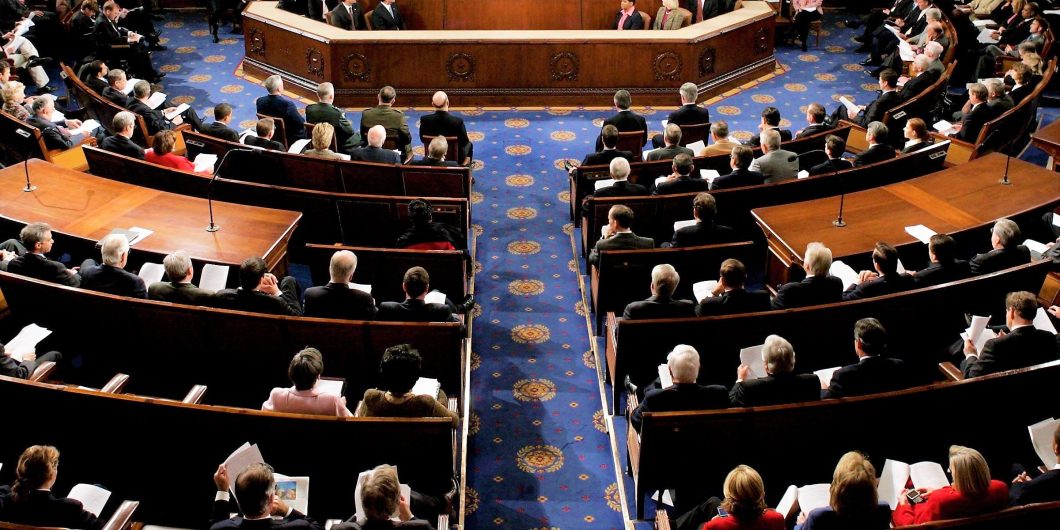The Congressional Roots of Our Polarization
The debate over the roots of “polarization” in the U.S. Congress has primarily been about whether it results from polarization in the broad electorate or whether it results from elite polarization in the parties, separate from any electoral dynamics. Whether caused by changes in party elites or in the electorate, fingers point mainly to the Republican Party as the main cause of polarization, with the crucial moment occurring under Newt Gingrich around the time of the 1994 congressional election. Largely overlooked in the Republican blamefest, however, is the pivotal role played by the Democrat-initiated congressional reforms in the 1970s, which decreased the agenda-setting power of committee chairs to block legislation and increased the power of the Democratic caucus over House rules and committee outcomes. These “reforms” are usually overlooked as contributing factors because the institutional changes managed to move legislative outcomes to the left without changing the underlying membership in the House of Representatives. The leftward movement of House outcomes was not an unintended byproduct of the reforms. The manifest purpose of the Democratic congressional reforms was to limit moderate and conservative Democratic House members and give fuller vent to the policy preferences of the more liberal Democratic representatives.
“Polarization” has several different definitions. These definitions are not mutually exclusive; one can mix and match. What the main definitions have in common, however, is that they present changing personnel and, hence, changing political preferences among representatives as the main cause of polarization. Cynthia Farina summarized the main theories of polarization in the literature:
First, the two major political parties have become internally more ideologically consistent across the range of social and economic issues (ideological coherence). Second, members have become better sorted by party (partisan sorting). The moderate republican and conservative Democratic wings evident through much of the twentieth century have largely disappeared. Finally, the distance between median party preferences has increased in both chambers (ideological divergence).
These theories mainly tell a story of changing political preferences and take the internal institutional organization of Congress as a constant.
But the institutional organization of Congress is not a constant. Over 20 years before Gingrich and the Contract with America, Democratic House members implemented reforms manifestly intended to pry legislative power away from conservative and moderate Democratic House members and move the actions of the House of Representatives in a decidedly liberal direction. This liberal shift would occur from institutional change only, without significant membership or ideological changes. Indeed, the institutional reforms would subsequently catalyze changes in the partisan membership of Congress.
As David Rohde explains in his meticulous study of the Democratic congressional reforms in the 1970s:
Goals and preferences are not the only factors that influence voting patterns. The nature of agendas from which choices are made is also important. . . . Because floor choices are dependent in part on the nature of the alternatives, changes in the processes by which alternatives are generated may lead to shifts in voting patterns . . . even if the distribution of operative preferences on the issue is unaltered. Thus decreases in the power of committee leaders or increases in the influence of party leaders, as targeted by the reforms of the 1970s, have a great potential to affect partisanship not only because they can shape the preferences of members on the floor, but because they can also have an impact on the alternatives from among which those members choose (both emphases added).
The genesis of the Democratic congressional reforms of the 1970s is well known. As a result of the U.S. Civil War, the two political parties had long been linked with regional identities rather than with ideological identities. As a result, a sizeable portion of the Democratic Party consisted of conservative Democrats from the South, and a sizeable portion of the Republican Party consisted of moderate—even liberal—Republicans mainly from the Northeast and upper Midwest.
After World War II conservative Southern Democrats often joined with conservative Republicans to block more liberal policy proposals proffered by Northern Democrats. But the power of conservative Southern Democrats was not limited to coalitions they formed with Republicans on final floor votes. The institutional structure of Congress at the time gave Southern Democrats an outsized impact on the legislative agenda because of their institutional power in the Democrat-controlled House of Representatives.
The main purpose of the Democratic congressional reform proposals was manifest: to wrest institutional control away from Southern Democrats and thereby reduce the moderating influence these Democrats had on legislative outcomes.
The roots of Southern Democratic power go back decades earlier. Due to the heavy-handed leadership of Speaker Joseph Cannon in the early 1900s, a group of progressive Republicans joined with Democrats to reduce the institutional powers of the Speaker of the House and to wrest the appointment power over the important House Rules Committee from the Speaker.
The institutional result was an increase in the relative power of congressional committees and, in particular, an increase in the power of committee chairs. Because of intra-party disagreements, committee chair positions were allocated mainly on the basis of seniority rather than on the basis of the members’ views. The views of neither the median member of the Democratic congressional caucus nor of the party’s leadership were guaranteed to be reflected by committee chairs.
Committees became little fiefdoms, with disproportionate control subsequently exerted by senior Southern Democrats. The Rules Committee correspondingly reflected the cross-partisan preferences of a coalition of Southern Democrats and conservative Republicans, rather than reflecting the preferences of the median member of the Democratic House caucus. This was all to the detriment of the more liberal northern Democrats, who nonetheless held a majority of Democratic House seats.
Pressure for institutional change increased from these more liberal Democrats throughout the 1950s, resulting in the founding of the Democratic Study Group in 1959, a group led mainly by liberal and moderate Northern Democrats. Pressure for change among Democratic House members increased even more with Democratic gains in the House resulting from the 1964 election.
The main purpose of the Democratic congressional reform proposals developed in the late 60s and early 70s was manifest: to wrest institutional control away from Southern Democrats and thereby reduce the moderating influence these Democrats had on legislative outcomes. That is, the reforms intentionally aimed to increase the influence of the more liberal preferences of the median member of the House’s Democratic caucus.
Democratic reforms took several avenues. First, the Democrats adopted a secret ballot in electing committee chairs, making it politically easier for Democratic House members to reject senior Southern Democrats whose conservatism did not align with the median member of the Democratic caucus. The Democrats also reduced the power of committee chairs and correspondingly increased the power of subcommittees. (Subcommittees, for example, would have their own staff going forward.) This decentralizing move, however, was paired with increased control of committee-specific Democratic caucuses over subcommittees. The committee caucuses could vote to overturn seniority-based “bids” for subcommittee chair positions and for membership on subcommittees. The net result was to increase in power of the median Democratic House members in these caucuses. And, again, these median caucus members, even at the committee level, were often more liberal than the committee chairs who had exerted outsized control over committee agendas before the reforms.
At the same time, reforms increased the power of the Speaker, albeit with control by the entire caucus extended as a check over the Speaker’s actions and appointments. For example, Speaker nominations to the important Rules Committee were now subject to an approval vote by the entire Democratic caucus.
The impact of these reforms only gradually asserted themselves in House outcomes over a decade or so. This is one reason the impact of these institutional reforms has been underappreciated relative to preference-based accounts of polarization. Nonetheless, the liberalizing purpose of the reforms was clear: the majority within the Democratic caucus wanted the reforms, Rohde concludes, in order “to advance the liberal policies they supported.”
Beyond the direct impact the Democratic congressional reforms had on liberalizing the House’s policy outcomes, they also catalyzed preference-based polarization. With Southern Democratic House members now purposefully defanged, a good part of the rationale Southern voters and elites had to stick with the Democratic Party dissipated. Southern voters would of course only indirectly see implications of these reforms over time with the increasing impotence of their elected Democratic representatives. But the effect undoubtedly quickened the evolution of the “solid south” from Democrat to Republican.
The Democratic reforms—in particular, the intentional increase of centralized party control over House outcomes—also provided the example for Newt Gingrich and the Republicans almost 20 years later. And not only by example. The Republicans could not be expected merely to stand by in response to the now more aggressive institutional liberalism of the House Democrats in the 1980s.
Despite the popular narrative that Republicans are almost singularly responsible for the polarization of modern national politics, the roots of polarization are in part the intended result of Democratic reforms in the House in the 1970s.


